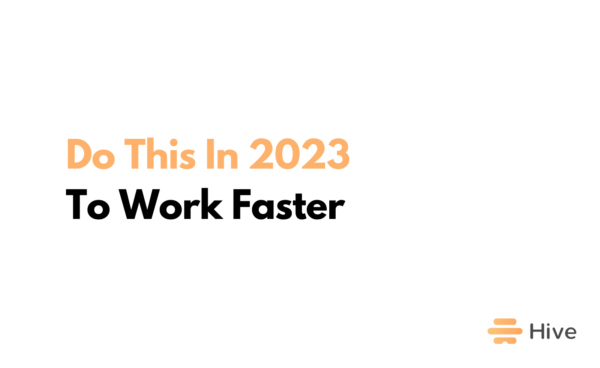In a world where we are constantly bombarded with messages to move faster, to be more productive, and to get more done, the concept of “hurry slowly” may seem counterintuitive.
But this approach to life and work has been around for centuries, and its proponents believe it is the key to true productivity. Not only does it help us to focus on what matters most, but it also helps us to prioritize our tasks, eliminate distractions, and stay motivated.
Geir Berthelsen explains it beautifully, “Slowness is the forgotten dimension to time. Unlike chronological time, it is non-linear, time here and now, time that works for you, extraordinary time. So why be fast when you can be slow? Slowness is also about balance, so if you must hurry, then hurry slowly.”
When you hurry slowly, you take the time to plan, think, and reflect. This allows you to avoid rushing and making decisions that can have negative consequences. Hurrying slowly requires understanding the importance of taking breaks, staying organized, and focusing on the most critical tasks.
Marilyn Monroe was right when she said, “Half of life’s heartaches come from decisions that were made in a hurry. One should make haste slowly.”
We can achieve our goals more efficiently by focusing on quality. This is why hurrying slowly has become so popular in recent years.
Hurry slowly” is a phrase that advises taking the time to carefully consider and plan out one’s actions rather than rushing into things without proper thought or preparation.
The idea behind this phrase is that by taking time to plan and execute tasks carefully, you can move faster and be more efficient in the long run. You move the needle quicker.
“Charles Darwin described himself as a slow thinker. Einstein famously sat in his office … gazing into the middle distance for hours on end … in the intellectual world and the arts, people have always understood the power of looking slowly at the big picture,” says Carl Honoré, the author of The Power of Slow.
Hurry slowly also means it’s better to work at a steady, sustainable pace while striving to be productive and efficient with your time. Doing this allows you to get more done in the long run while avoiding burnout and stress. This approach can be applied to any area of your life, from work to home life and everything in between.
“Haste is a poor counselor,” said Alexandre Dumas.
Hurry slowly is especially useful when it is essential to make the most of limited resources or where the consequences of mistakes or missteps could be significant. By carefully considering the best course of action and getting things right the first time, it is possible to avoid costly errors and delays that can ultimately slow down progress.
“The foundation of slow remains the same: a return to high-quality basics, a reevaluation of the largely unnecessary ‘must haves’ of modern life,” says Brooke McAlary.
There are several ways in which adopting a “hurry slowly” mindset can help you move faster and more efficiently:
- Being more deliberate about investing and spending time: Take time to consider how you use your time carefully and make conscious decisions about how to allocate it. Don’t waste time on tasks that don’t align with your goals or priorities. Instead, focus on the tasks that will have the most significant impact on your life or work.
- Make a list of tasks and prioritize them: By making a list of the tasks you need to complete and prioritizing them, you can focus on the most important tasks first and avoid wasting time on less critical tasks.
- Break tasks down into smaller steps: By breaking tasks down into smaller, more manageable steps, you can make progress more efficiently and avoid feeling overwhelmed.
- Use time-saving tools and techniques: There are many tools and techniques that can help you save time and be more efficient, organize your tasks and projects, set deadlines, track your progress, and block distracting websites and apps to stay focused on your work.
- Take breaks and manage your energy levels: It’s important to take breaks and manage your energy levels to stay focused and avoid burnout. Taking breaks can help you recharge and come back to tasks with fresh eyes and a clear mind.
- Pause to reflect: Once a week or month, take a moment to think about what you’ve done and what you want to do next. Reflecting on your work can help you to identify areas where you could be more efficient or effective and make adjustments as needed. It can also help you gain perspective and see the bigger picture.
- Avoid distractions: Try to eliminate distractions as much as possible so that you can focus on your tasks. This might include turning off almost all notifications, finding a quiet workspace, or letting others know you’re unavailable.
- Defend your time: Learn to say no more often. It’s essential to be selective about the tasks and projects you take on, as taking on too much can lead to burnout and lower productivity. Don’t be afraid to say no to tasks that don’t align with your goals or that you don’t have the time or resources to handle.
Overall, the concept of “hurry slowly” can be a helpful reminder to take a measured and thoughtful approach to tasks and projects rather than rushing in without careful consideration. By doing so, it is possible to move faster and more efficiently in the long run. So, the next time you feel overwhelmed, hurry slowly.
This article originally appeared in Medium.

